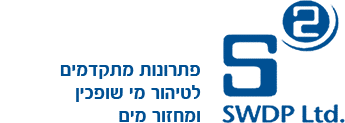general
S² offers a wide range of solutions and technologies for various industrial uses. The company's guideline is to tailor a solution to each customer while emphasizing:
- Improving the quality of sewage for the purpose of complying with regulations.
- The cost of routine care is as cheap as possible
- Minimum investment - use of existing facilities and equipment as much as possible.
- Quick implementation of the solution.
- Accompaniment in dealing with the authorities during the application and afterwards
Removal of heavy metals from wastewater from electro-polishing
The problem-Electro-polishing is an electrochemical process, which is performed in a bath of acidic electrolyte. The energy is provided by a rectifier. The metal piece is connected to the positive terminal (anode) and the negative terminal is attached to an auxiliary electrode (cathode). During this process, a layer of some 20 micron is removed and the wash water contains high concentrations of heavy metals. Its discharge to the municipal sewer is forbidden.
- Efficient disposal of most heavy metals including nickel and chromium.
- Effective removal of phosphorus and fluoride.
- Good effluent quality: <20 NTU
- The whole process is done at a neutral pH, so that the treated effluent meets the standard without the addition of salts and additional chemicals for neutralization.
Advantages of the process:
- Technology is often cheaper than similar technologies
- Limiting the amount of salts added to the effluent compared to using caustic soda and acids
- הגבלת כמות המוצקים ככלל והרעילים בפרט לפינוי בהשוואה לשימוש בסיד.
- The technology does not require a significant change in existing facilities.
Treatment of sewage from poultry slaughterhouses and slaughterhouses
S² has successfully implemented a physico-chemical treatment process for poultry slaughterhouses and slaughterhouses. The process is based on the use of sodium aluminate (or potassium aluminate) which allows efficient removal of the suspended solids (TSS) and fats while neutralizing the acidic effluent. The effluents obtained in the process comply with regulations and sometimes even more than that. The removal of fats is up to a level that cannot be measured by conventional methods.
S² has participated in a number of experimental projects that have been defined as successful in the areas of saline and sewage treatment containing blood.
Moreover, the company has improved the performance of existing facilities without the need to purchase new ones.
In most cases the application was immediate and effective.
Advantages of the process:
The cost of the treatment is significantly lower than the cost of the "competing" treatment with the help of alum and caustic soda, while reducing the amount of salts added for the treatment.
Improving the quality of saline treatment from the training processes, with the help of sodium aluminate, it is possible to evacuate saline to the sea.
